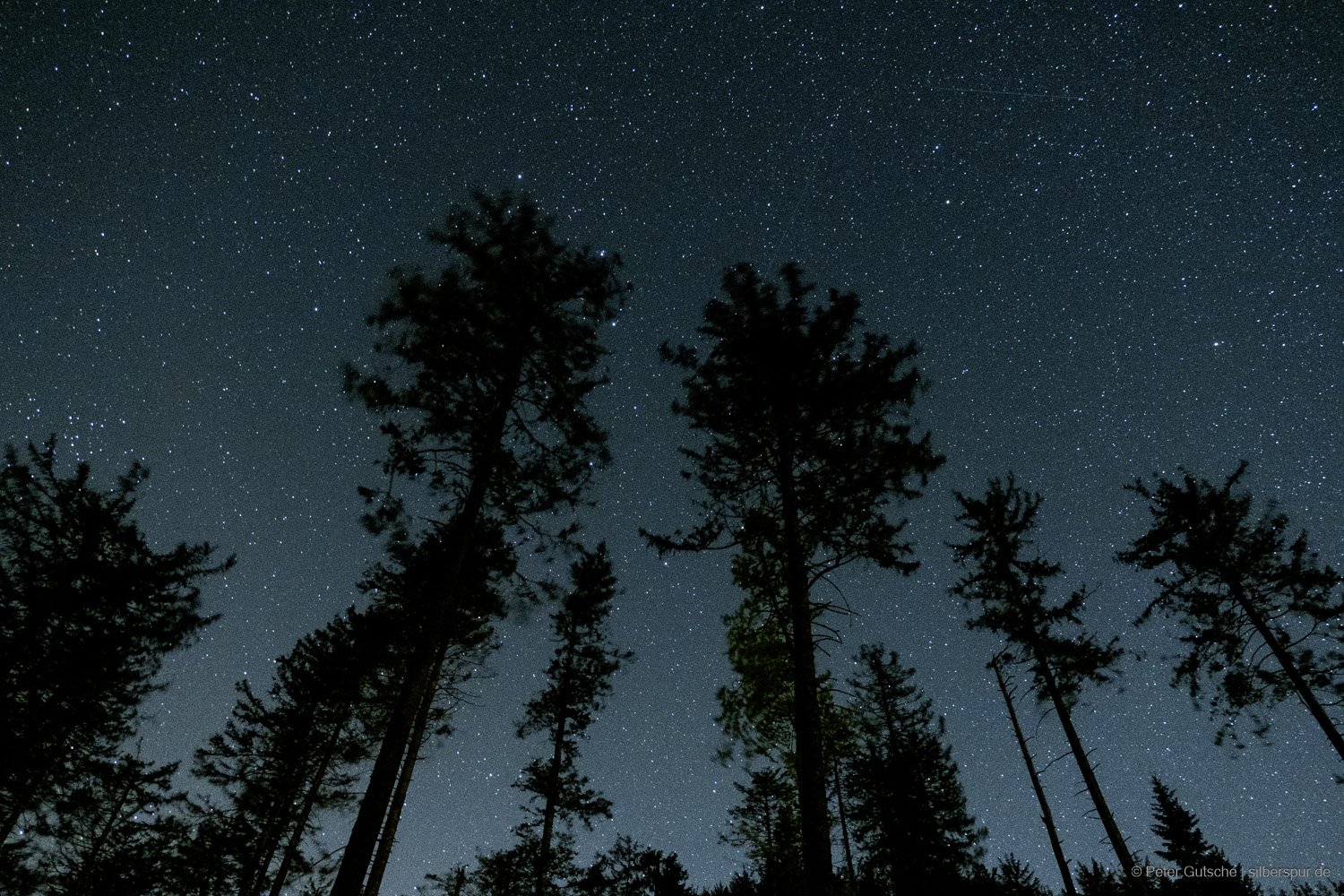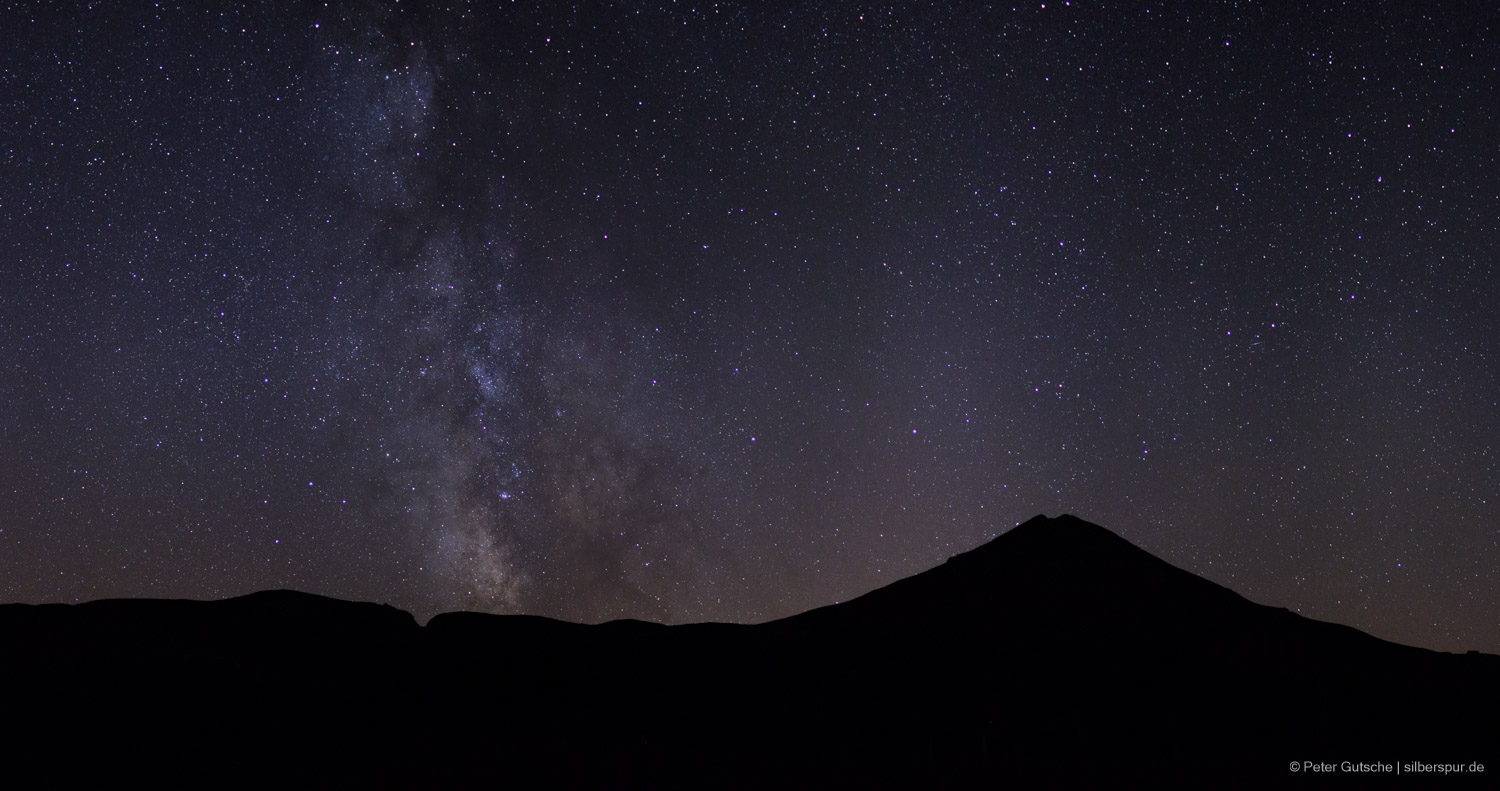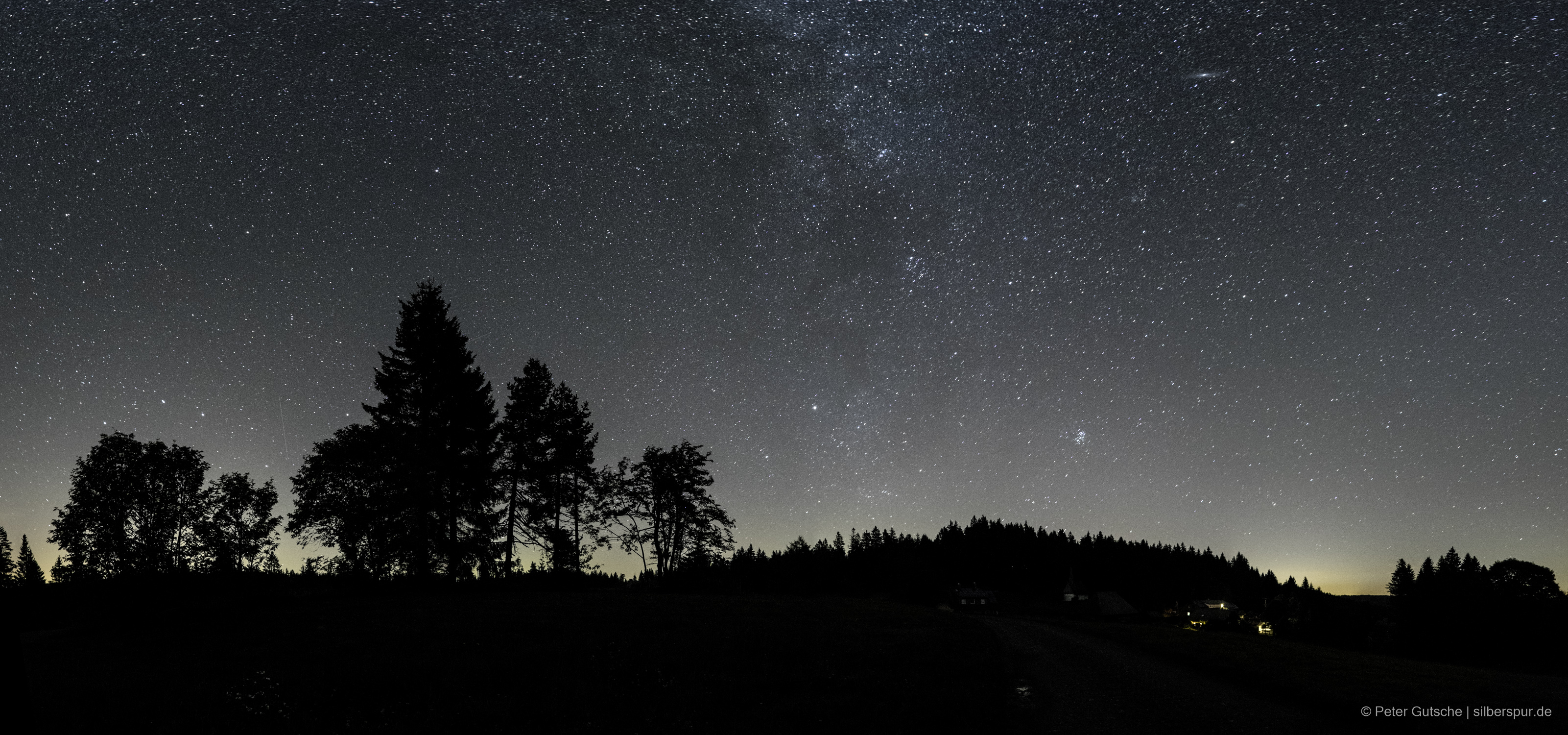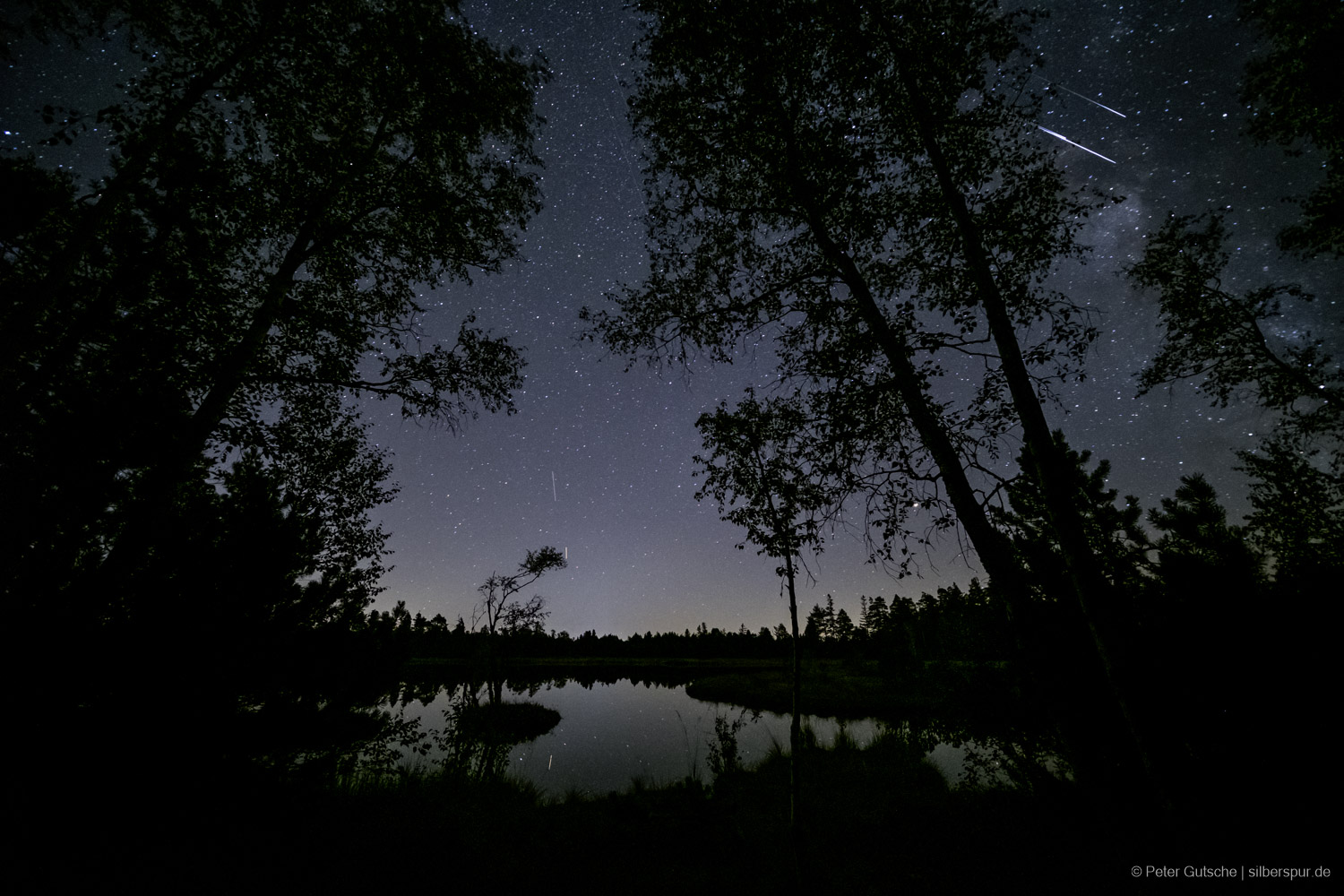Why is it dark at night?
It seems like a trivial question: Why is it dark at night and why do we see individual stars against a dark background?

The German astronomer Heinrich Wilhelm Olbers, born in 1758, pondered exactly this question and conducted a thought experiment: At that time, it was believed that the universe was infinitely large and infinitely old, with stars homogeneously distributed within it. Under these assumptions, the light from stars in every direction should have reached us by now, and therefore, the sky should appear at least as bright as the surface of a star at every point. Even considering that the intensity of light on Earth decreases with the square of the distance to the light source (star), the number of visible stars at a certain distance would increase with the square of the distance. If one imagines the stars distributed on spherical shells around the Earth, the area of each of these hypothetical spherical shells also increases with the square of the distance. Both effects would thus cancel each other out, and in an infinitely large universe with evenly distributed stars, the sky should shine brightly everywhere. However, this is clearly not the case based on common experience.
The reason for this is that one of the assumptions underlying this thought experiment—that the universe is infinitely old—does not correspond to reality. However, this was not known during Olbers' time. It wasn't until the 20th century that it was discovered that the universe, although old, is not infinitely old—specifically, it is only 13.8 billion years old. Stars have formed and disappeared since then. This means that there hasn't been enough time for the light from infinitely many stars to reach us. Whether the universe is spatially infinite is unknown. However, what we do know is that the observable universe is finite, and its size can be estimated. Therefore, the number of stars from which we can receive light is also limited by spatial constraints.
Modern astronomy (Learn more) has found even more reasons to fully resolve Olbers' paradox.
The theory of the beginning of the universe states that besides the visible light from galaxies and stars, there is another type of radiation, invisible to the eye, that we receive from all directions with radio telescopes. This is the cosmic background radiation, the „oldest“ form of radiation that reaches Earth. Put poetically, it is the still visible „flicker“ of the Big Bang. Approximately 400,000 years after the beginning of the universe, when the universe—initially an unimaginably hot entity—had cooled to about 3750 Kelvin, the previously free, unbound electrons and protons could aggregate into atoms, mainly hydrogen and helium.
With the atoms, the matter we know today was formed. The free electrons and protons had previously scattered all electromagnetic radiation, making the universe appear like an opaque fog. But from then on, the scattering ceased, and the universe became transparent. Due to its temperature of 3750 Kelvin, it must have emitted thermal radiation that we should be able to observe to this day, according to Wien's displacement law. (Learn more)
As a consequence, we should be able to perceive warmer light in the visible spectrum uniformly distributed across the entire sky at night. The reason that this is not the case is, as we now know: The universe itself, meaning space, has been expanding since its inception, causing the background radiation to be „redshifted“. This shift to longer wavelengths corresponds to lower radiation energy and temperature. What we can measure today as background radiation is „cold“ microwave radiation coming uniformly from all directions, which the human eye cannot perceive. Therefore, the night sky is dark and only speckled with many, but separated, points of light.
Hubble sphere, cosmic event horizon, and the size of the observable universe
In space, nothing can move faster than the speed of light according to Einstein’s theory of Special Relativity. However, Einstein’s theory of General Relativity explains that space itself can expand.
The expansion of the universe is not simply galaxies moving apart within space but rather an expansion of space itself. According to the Hubble-Lemaître law (Learn more), the recession velocity of galaxies increases with distance. Beyond a certain distance, galaxies recede from us faster than the speed of light—not because they are moving through space faster than light, but because space itself is expanding so rapidly. From regions receding faster than light, neither light nor any signal can reach us.
To describe this phenomenon, astronomers use the concept of the Hubble sphere. It defines the region around an observer where objects appear to move away at speeds greater than light due to the universe's expansion. The radius of the Hubble sphere, based on the Hubble-Lemaître law, is approximately 14.4 billion light years. If the Hubble parameter remained constant over time, only objects emitting light within the Hubble sphere would ever be observable.
However, the Hubble parameter changes over time, reflecting the universe’s varying expansion rate throughout its history. This variation introduces the cosmic event horizon, which defines the farthest distance from which light emitted now can ever reach an observer in the future. Taking the Hubble parameter's evolution into account, the event horizon’s radius is about 16 billion light years. If the Hubble parameter were constant, the event horizon would match the radius of the Hubble sphere.
As the universe has a history, we must consider yet another concept: the particle horizon. Since the Big Bang—or more precisely, since the universe became transparent to radiation (Learn more)—light has traveled through expanding space to reach us today. Because space is expanding, the universe lacks a defined center. For any location, including Earth, the particle horizon marks the part of the universe from which light has traveled to that point since the beginning of time. It represents the edge of the observable universe at any given moment.
Currently, the particle horizon has a radius of about 46 billion light years. Although the universe is 13.8 billion years old, its ongoing expansion has stretched this distance significantly. Thus, we see light today emitted by objects shortly after the Big Bang—more than 13 billion years ago—but these objects are now much farther away, at a distance of about 46 billion light years.
Light emitted today by a star near the particle horizon, about 40 billion light years away, will never reach Earth. However, light emitted today from within the event horizon will eventually arrive.
Yet even within the limited „bubble“ of the observable universe, the number of galaxies is unimaginably large. A rough estimate yields 10 to 100 trillion stars. (Learn more)
The cosmic neighborhood shaping our night sky
For the experience of the night sky on Earth, it is essentially the stars of our own galaxy—the Milky Way—that play a role. All the stars we can resolve as individual points with the naked eye are located in our immediate cosmic neighborhood, at most a few hundred to a few thousand light years away. What we see on clear nights as a luminous band in the sky, commonly referred to as the „Milky Way“, is the projection of the main disk of our galaxy, where most of the stars are concentrated, onto our celestial sphere. The stars that we can no longer perceive individually with the naked eye are mostly very far from us; the center of the Milky Way is about 26,000 light years away. Other galaxies, on the other hand, are at distances of several million to billions of light years. The Andromeda Galaxy, our neighboring galaxy, is about 2.5 million light years away.
The following photo was taken in Cantal in the French Massif Central. It shows the band of the Milky Way, whose brightest section can be seen from Europe in the south on summer nights. Visible is the center of our galaxy, partially obscured by dark interstellar dust clouds. The mountain silhouette on the right belongs to the 1,783-meter-high Puy Mary, and the distinctive notch on the mountainside to the left is the rock furrow „Breche Rollande“. This panorama is composed of several individual shots taken consecutively with the same exposure time.

The most distant object that humans can still see with the naked eye is the Andromeda Galaxy. It can be seen in the top right of this photo as a small, elongated smudge of a nebula. This panorama is composed of several individual photographs.

The following photograph shows a nighty scene at a remote lake in the Black Forest, Germany. Shooting stars are clearly visible (top right in the image), while the two shorter streaks in the center of the image are from airplanes. The photo was taken at Wildsee in the high moor near Kaltenbronn in the northern Black Forest.
